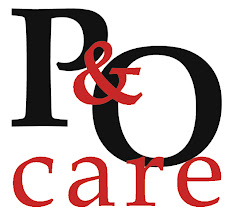Friday, June 27, 2008
Wednesday, June 25, 2008
Economic downturn affects local hospitals, too
Economic downturn affects local hospitals, tooST. LOUIS POST-DISPATCH06/25/2008
Mary Jo Feldstein [More columns] [Mary Jo Feldstein's biography] (P-D) |
SSM Healthcare-St. Louis announced another round of departures last week. This time, it was mostly top hospital managers. Since the system's new chief executive, Jim Sanger, came on board late last year, nearly 200 local SSM employees have lost their jobs.
Most losses have been part of a larger shift to make the SSM system more cohesive. Most decisions on human resources, finance and technology will be made at two regional offices or at corporate. Eventually, nursing protocols will be formed by a centralized committee.
For years, managers at hospitals within SSM and BJC HealthCare — the St. Louis area's largest health systems — have controlled most decision-making within their facilities. Goals and benchmarks were set at the corporate level. Achieving them was left to the hospitals.
In many ways, experts say, the changes at SSM make sense. A more efficient system that's better equipped to determine best practices and implement them should result.
When a hospital system has several similarly sized facilities near each other, there's little reason to duplicate back-office functions, health care consultants said. And, as insurers and the government promote standardization to achieve better quality care, centralization could funnel directives more quickly through the system.
"Business in general is constantly pushing to say, 'How do we get the most value?'" said Susanna Krentz, a senior principal at the nonprofit Nobilis Center for Health Innovation near Chicago. "Health care systems are doing the same thing."
Change never occurs without discomfort.
"Whatever strategy the corporation adopts, it has to be consistent with the corporate culture," said Donald Davis, a managing director at TriBrook Group Ltd., a health care consulting firm in suburban Chicago. "Culture eats strategy for lunch."
Krentz and Davis said hospital systems around the country are trying to figure out the right balance of centralization and independence.
"There's no one right answer," Krentz said.
She points out the calculation might be quite different for BJC. It has hospitals ranging from a large academic medical center, Barnes-Jewish Hospital in the Central West End, to the 22-bed Clay County Community Hospital in Flora, Ill.
BJC's chief executive, Steve Lipstein, agrees. BJC corporate sets priorities and determines how progress will be measured. All of the hospitals use the same clinical-performance and patient-satisfaction scorecards, for example. But Lipstein said BJC's hospitals have considerable autonomy in implementing the objectives.
And, while Lipstein said it's important to manage costs and prevent duplication, he thinks physicians should be given the tools and equipment they feel is necessary to do their best.
On a side note, not all of this year's hospital layoffs have been the result of strategic change.
Some — including about 45 positions at SSM's St. Mary's Health Center in Richmond Heights and 25 at its DePaul Health Center in Bridgeton — stem from the hospitals seeing fewer patients than they expected.
Citing similar declines in patient volumes, Missouri Baptist Medical Center, BJC's outpost in Town and Country, said last week that it was laying off about 40 people, mostly administrative staff and managers.
Hospitals are facing increasing pressure to improve care while cutting costs. Quality directives from managed-care companies and the government are coming with slight, if any, increases in payment. And lately, some hospitals are seeing fewer patients.
It's not clear exactly what's driving the trend, but here's a possibility: As health plans raise the patients' portion of their medical bills and more families have fewer dollars to spend, some might be holding off on care. Meanwhile, outpatient and testing services continue to grow, sending more patients out of the hospital for care.
Though hospital finances might see leaner years ahead, hold off on the bake sales. Most of our area hospitals have built up healthy reserves in recent years. Indeed, difficult conditions might force them to ready themselves for the next generation of health care.
Tuesday, June 24, 2008
Congratulations Shawn!
Congratulations to Shawn McAdams, C.P., for passing his board exams and becoming an ABC Certified Orthotist. The American Board for Certification in Prosthetics and Orthotics offers the highest certification in the profession, requiring a four-year bachelors degree, training in the fabrication of prosthetic and orthotic devices, a graduate certificate like the one Shawn earned from Northwestern Medical School in Chicago, and finally a year-long residency each for orthotics and prosthetics.
While most states require professional certification and licensure for doctors, therapists, nurses, and hairdressers, currently only eleven require that prosthetists and orthotists get certified and licensed. Illinois does, but Missouri doesn't. Still, all of P & O Care's practitioners on both sides of the river have graduated from Northwestern University, and our residents work under proper supervision until they pass their boards.
Monday, June 16, 2008
Congressional Action On Durable Medical Equipment Could Jeopardize Patient Care For Amputees And Other Disabled Medicare Beneficiaries
Many Americans, even Medicare beneficiaries, may not be aware that Congress is working hard on revisions to the Medicare law.
Under the Congressional rules, all costs to Medicare involved in delaying competitive bidding on the selling of medical equipment like hospital beds, wheelchairs, and oxygen, will have to come from elsewhere in the Medicare system. A spokesperson for DME suggested in Congressional testimony that there be a broad cut to the Medicare DME fee schedule to pay for the delay on competitive bidding - in essence that DME suppliers, being those who will benefit from the delay in competitive bidding, ought to be the ones to pay for it.
Recently, however, the discussions have taken an alarming turn. DME suppliers are the only ones who would benefit from a delay in competitive bidding, but some are suggesting that other Medicare suppliers should help cover the costs through reductions in their fee schedule, including the orthotic and prosthetic (O&P) field. The consequence of such a proposal would mean fee cuts to patient care facilities that provide care to America's amputees and other disabled individuals. This has prompted grave concerns about access to those O&P facilities providing care and restoring mobility to these patients, many of whom are Medicare beneficiaries.
"Americans have been heartened to see that veterans returning from Iraq and Afghanistan are benefiting from the tremendous improvements that are now available for those who have lost a limb, or have impaired mobility due to limb injuries," said Brad Ruhl, President of the American Orthotic and Prosthetic Association. "This proposed change is incomprehensible... prosthetics and orthotics are NOT included in competitive bidding, and it would be profoundly unfair for Congress to pay for a delay in competitive bidding by reducing Medicare payments to amputees and other disabled seniors, including disabled veterans and disabled children who are well-served under the current O&P fee schedule."**
Ironically, this week hundreds of amputees converge on Washington for an annual legislative day conducted by the Amputee Coalition of America (ACA), and plan to ask members of Congress to enact a prosthetic parity bill to assure that all insurers provide the identical coverage for amputee care that is provided for all other medical and surgical conditions. Some insurers have limited coverage to one replacement limb per life, or very meager amounts on how much they will spend for replacement limbs. It is an anomaly to have some in Congress talking about balancing the budget for what they wish to do to help DME, on the backs of these amputees.
"Orthotics and prosthetics have already gotten the short end in prior fee cuts and freezes, so we have lost significant ground to inflation in recent years," says James Kaiser, CP, LP, of Scheck and Siress, a chain of prosthetic and orthotic patient care facilities in the Midwest. "If there is a new round of Medicare cuts to help pay for this totally unrelated DME competitive bidding delay, the approximately 20% of O&P patient care facilities that are already on the edge will close, severely damaging patient access and choice, and assuring longer delays for these Medicare amputees and other disabled patients at the fewer, more crowded facilities that would remain open to serve them."
AOPA, based in Alexandria, Virginia, is the largest non-profit organization dedicated to helping orthotic and prosthetic businesses and professionals navigate the multitude of issues surrounding the delivery of quality patient care. The association was founded when needs of returning veterans in the aftermath of World War I required a national organization to address the educational and research requirements of the industry.
**This refers to veterans with non-service connected injuries who are covered by Medicare and disabled children covered under Medicare and Medicaid. In addition, it would affect all private managed care contracts that pay based upon a percentage of the Medicare fee schedule.
Tuesday, June 10, 2008
Practitioner Profile: Shawn McAdams, ABC Certified Orthotist

Shawn got into the P&O field to help people just like himself. "In November of 2000, I fell and broke my back so that I could no longer do a laborers job. Through a vocational rehabilitation program, I was able to get retrained, so I went to school to become an orthotic and prosthetic technician. I knew that I wanted to help people directly with their needs rather than in an indirect way with fabrication, so I went back to school for my bachelors degree and then on to Northwestern University to become a CPO.
"First, I became a technician because I wanted to make the tools for people to have a better life. Then, I became a practitioner because I wanted to see the smiling face of the patient using the tools that I had designed. I like to help people achieve peace of mind. When someone is hurting, they tend to focus on that hurt. If I can help relieve that hurt, then they can focus on other things in life that make them happy and fulfilled."





